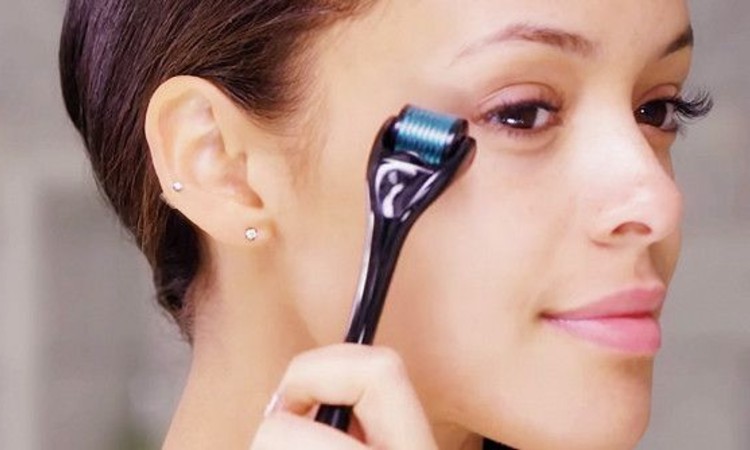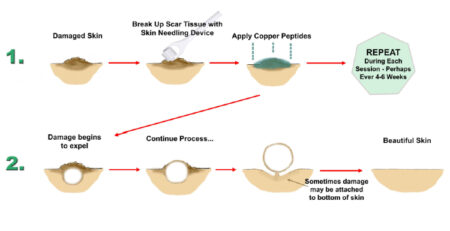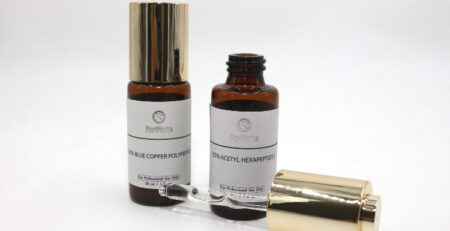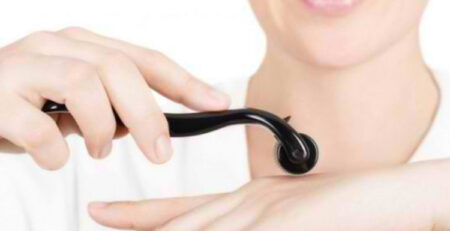Derma rolling hurts! What You Can Do?
Okay, so you decided to try derma rolling therapy because you probably overheard your friends talk about it. Or you may have read an article about derma rollers and you are curious on how it works? You learned that derma rollers are effective in reducing scars, fine lines, wrinkles, burn scars, and many other beneficial effects at a low and reasonable cost. If you are a student or having a tight budget, derma rolling therapy is one of the best options to choose from. You can get a similar, more effective and permanent results even with a limited budget.
You may probably buy a 1.0 mm home care derma roller device, and you were surprised to know that it hurts! It is possible that you have a sensitive skin and or you have a low tolerance to pain. Whatever the reasons are, you just cannot tolerate the pain while derma rolling, so what can you do?
What about Derma rolling Therapy?
Derma rolling therapy has many other medical terms which are accepted in the medical community. It is also called as skin needling, Percutaneous Collagen Induction or PCI, Collagen Induction Therapy, Intradermabrasion and Tattooing. It started in late 1990’s and become popular worldwide.
It involves the use of manually applied derma rollers with approximately 200 surgical steel needles attached to the cylinder of the roller mechanism. It is used in the skin in various crisscross motions or direction. The main goal of skin needling is to puncture the skin to stimulate collagen and elastin production.
Derma rolling therapy keeps the skin smooth and promotes reduction of stretch marks and other scars through the skin’s natural healing process. Derma rolling therapy is popular among dermatologist and other medical professionals because of its ease of use and effectiveness. It targets the upper dermis or the intermediate reticular dermis to stimulate the growth of new skin cells.
How to Roll the Right Way without Hurting yourself?
There are a number of techniques that you can use, so you won’t feel any pain while having derma rolling. If you have sensitive skin and low tolerance to pain, this is what you should do:
Use Numbing Cream
You may apply a topical numbing cream on your skin, before starting your derma rolling treatment. It causes loss of feeling on a particular area so you can perform derma rolling treatment without having any pain at all!
Apply Pressure as you can Comfortably Tolerate
When rolling, you do not need to push hard enough to stimulate collagen and elastin production. The micro injury itself can already trigger the production of growth factors to stimulate the repair mechanism of the skin. Apply just enough pressure that you can comfortably tolerate so you won’t feel too much pain.
Roll 2 or 3 Times Per Area
Take note that you don’t have to over roll the derma rollers. Two to three rolls per area is enough to stimulate collagen and elastin production. If you over roll it may stimulate an inflammatory reaction which may derange the repair mechanism of the skin.
Why Derma rolling Therapy Hurts?
The pain caused by derma rolling therapy depends on the needle length, gauge and manual pressure used while rolling. Thus, the level of subsequent inflammation and skin invasion varies on the gentle stimulation of the punctured skin and proper drawing of fluids such as the lymph and blood.
If you are using longer needles particularly for home use, make sure that you apply numbing cream before rolling. You also do not have to push too hard, so you won’t cause any further injury to the skin.
Keep in mind that different needle length has different outcomes! A roller with shorter needles approximately below 0.24 mm in length is non-invasive and will not cause any trauma to the skin. But it can provide and stimulate gentle exfoliation of the skin while increasing the superficial circulation.
It is like having a manual massage and other electrical stimulation modalities where it enhances the skin penetration and absorption of topical serums, creams, and other active ingredients into the deeper skin layers. Thus, the anti-aging benefits of derma roller can be enhanced when derma rolling is combined with topical products that contain skin-fortifying and collagen-boosting ingredients such as Vitamin C Serum and Peptides and Retinoids.
Take note that thinner and longer needles around 1.0 mm to 1.5 mm in length are generally more hazardous. It has the potential in breaking the skin, cause injury and draw fluids. There is also a higher risk of getting an infection.
Hence, you need to observe extreme precaution when performing this high-risk and highly-invasive technique particularly if you are using it at home.
Premature aging can be due to the inflammatory mediators that are drawn to the area. Thus, you may need to use anti-inflammatory and calming products to soothe any inflammation after skin needling. It is also important to observe pre-care hygiene wherein you thoroughly clean your skin before derma rolling to prevent any spread of infection.
Take the Necessary Precautions
As consumers, you have a limitless choice of dermatologic treatment that fits your needs and demands. But it is very important that you know and understand how to use the cosmetic device correctly, appropriately and safely. Understanding the risk and limitations of the device is part of your responsibility as a consumer.
The success of derma rolling treatment depends on your ability to follow instructions properly and how you perform the rolling session correctly. Feeling some sort of pain while derma rolling is inevitable, hence you need to evaluate the potential outcome of the treatment so you can easily tolerate any pain.
More so, there are available numbing creams that would help you feel lesser pain while having your derma rolling session.
Works Cited
Aust MC1, Fernandes D, Kolokythas P, Kaplan HM, Vogt PM. (2008). Percutaneous collagen induction therapy: an alternative treatment for scars, wrinkles, and skin laxity. Plast Reconstr Surg. , 1421-9.
El-Domyati M1, Barakat M1, Awad S1, Medhat W1, El-Fakahany H1, Farag H1. (2015). Multiple microneedling sessions for minimally invasive facial rejuvenation: an objective assessment. Int J Dermatol. , 1361-9.













